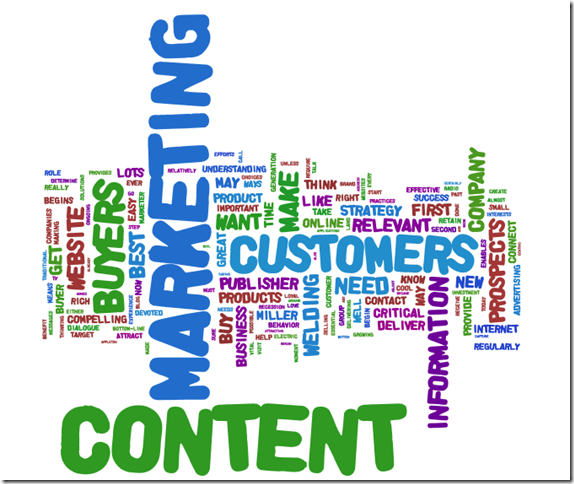 Content marketing is nothing new. However, there is so much “noise” being created on and offline, it is overwhelming. There are online “press releases”, social media sites and websites established just for organic search engine optimization, and it is timely to revisit why generating truly valuable content for your target audiences is imperative and beneficial.
Content marketing is nothing new. However, there is so much “noise” being created on and offline, it is overwhelming. There are online “press releases”, social media sites and websites established just for organic search engine optimization, and it is timely to revisit why generating truly valuable content for your target audiences is imperative and beneficial.
Content marketing is the process of developing and disseminating relevant and valuable content to customers and prospects. The goal is to engage and ultimately drive an engaged action from consumers. The key benefit for customers/prospects is they receive information that benefits them, and the reward for the business is it becomes a trusted resource when a customer/prospect is ready to take action on a related product or service.
Examples of content marketing include educational microsites, expert blogs, educational videos, custom publications, useful smart phone apps and small bits of information disseminated through social media. Even creating feature articles for magazines is a good example of content marketing.
Prior to developing content, consider the following to help shape your content marketing strategy.
1. Build Content Around Customer’s Pain Points: In order to create valuable content for customers and prospects, develop a clear understanding of what makes consumers tick as well their challenges. Document what you know and what you still need to learn about consumers’ pain points, and identify opportunities as ways to solve them. Once you understand the type of information a customer needs, it is easy to develop content directly addressing topics they care about.
2. Identify Channels of Distribution: It is absolutely essential to know where and how customers/prospects get their information. This of course is different for every industry. If customers/prospects are not using Twitter or Facebook, no matter how good your content is, it is not going to reach them. If you are not sure on the best distribution method, conduct research.
3. Develop a Strategy: Develop a clear editorial calendar to guide your content. What exactly should be published, when and how often? Plan topics in advance and then modify as needed based on current events and emerging trends. A little work up front can save time and frustration in the end.
4. Content Should Change Behavior: The goal with content marketing is to make a connection with customers/prospects that will eventually lead to profitable action. The first step is developing content that is important and relevant to the audience. But in order for the content to be an effective marketing strategy, marketers need to find a way to relate content to their company’s message, communicate indirectly how a product or service eases a pain point, and encourage a change in behavior that benefits both the customer and the business. Not seeing behavior change? Consider testing new content and delivery methods, but do give each approach time to work and the attention to properly assess shortfalls.
5. Understand Impact on the Bottom Line: It is simple to track and measure microsite hits, blog visitors, followers, likes, circulation, etc. But go beyond those statistics. When implemented successfully, content marketing should drive profitable customer actions. If your content marketing strategy is not helping to achieve your goals (increasing qualified leads, driving sales, saving money, increasing customer satisfaction, etc.), consider ways to revise the content.
Content marketing can be a valuable marketing strategy. But just like all marketing strategies it requires time and attention. Consider closely the valuable content your company can share, the best distribution methods and how to best measure the campaign to develop a successful content marketing strategy. The result is content that will benefit target audiences, build brand and drive sales in the process.

